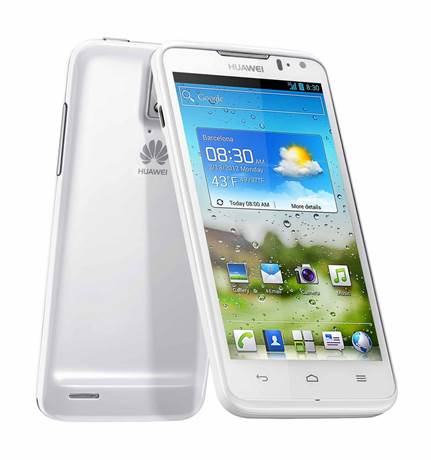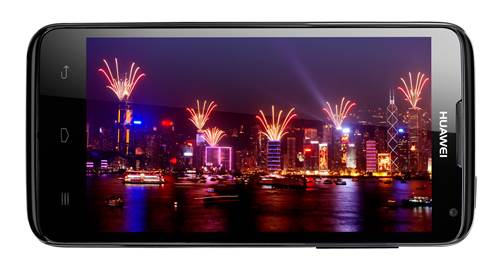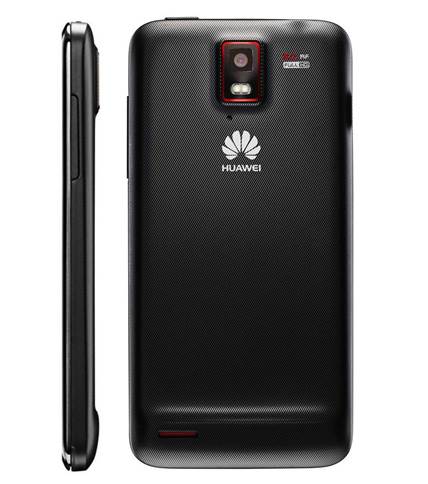When Huawei introduced its Ascend P1 last
year, it showed that the company is ready to tackle the big guns. The Ascend P1
is a really remarkable phone. Take into account the affordability factor,
almost anyone can have a dual-core phone as their first smartphone. Then, at
the end of December 2012, Huawei unleashed an impossibly bigger gun – the
Ascend D1 Quad – in Malaysia. However, this affordable quad-core smartphone
will be facing other similarly buffed up models, like the Samsung Galaxy Note
II and HTC One X. Will it hold up against its new peers? Let the games begin!

The
Huawei Ascend D has a 1.5GHz quad-core processor
That look…
When I take a look at the Huawei Ascend D1
Quad, it seems familiar. The red accents and rubberized back is a design that
other manufacturers had been using for some time. However, this doesn’t mean it
lost any of its appeal. The built is sturdy while the weight corresponds with
the phone. I am not a fan of overly light phones so D1 Quad’s weight is
perfect. And in all honesty, no one should complain about this smartphone’s
weight as it reflects quality. Complaining about this phone’s weight is like
punching a metal door: it doesn’t matter. With all the praise I happen to be
heaping on the D1 Quad, I am also more concerned about the camera lens, which
happens to be bulging out. When I place the phone on top of any surface, there
is a chance of it being scratched.
That display…

The
weight feels about right at 130gms, and its 129 x 64 x 8.9 mm dimensions means
that it fits quite nicely in most hands
On the front are a 4.5in IPS+ display and
my full attention. Pixels are nonexistent here. I try really hard to find one
but failed miserably! I have to admit, this is my top three displays to look
at. Fonts and icons look crisp while colors seem natural to the eyes. I have
noticed that there is a slight mute to the radiance, even when set to maximum
brightness, which suggest the D1 Quad is under-saturated. However, the blacks
look deep enough and even though it is not the best, it is better than many
other phones. Even after turning the phone at weird angles, I can still see
everything!
That processor…
Meet the hero feature for D1 Quad: the
Huawei K3V2 SoC processor. Yes, it is the company’s very own processor. Just
imagine: this is a head to head competition with other chipsets like Exynos,
Tegra 3 and Snapdragon S4 Pro. It is certainly a gutsy move from Huawei.
Quad-core and clocked at 1.4GHz, the phone runs smoothly with no foreseeable problems.
I can play games like Dead Trigger, N.O.V.A. 3 and RipTide at maximum settings
with no lags whatsoever. The same can be said with 1080p videos. Interestingly,
I notice a lag when I am using WhatsApp. As I am scrolling down to view all the
messages, the recurring hold-up is there. This problem also presents itself,
every once in a while, when I swipe from home screen to home screen. However,
taking into consideration that this is an affordable smartphone with a NEW
processor, it is definitely good enough to keep up with the other powerhouses.
That software…

Picture
quality was a key part of Huawei's announcement, and the 8MP sensor treads
water with most of today's handsets
The only disappointment here is the D1 Quad
doesn’t come with Android 4.1 Jelly Bean inside. This doesn’t mean the previous
Android operating system (Ice-cream Sandwich) is bad either. In fact, I am sure
there will be a JB update very soon. Also, choices are good, yes? Of course!
This is why Huawei provided me with the option to choose between its almost
vanilla Android interface and a 3D home launcher. The 3D variant adds a
depth-like feeling to the experience such as a cube effect. However, purist
will just stick with the 2D home screen. It is as close as Huawei can give to
stock ICS. The only noticeable add-ons apart from the apps in Huawei’s 2D home screen
are the lock screen shortcuts: call logs, messages, unlock and camera.
That camera…

The
camera isn’t the fastest in the world, but these are minor quibbles about what
is really a solid camera
When it comes to Huawei’s shooter, I didn’t
encounter any problems. Although, comparing it to its previous flagship phone;
the Ascend P1; the D1 Quad’s image quality lacks high contrast. Don’t worry, it
still takes very convincing photos. Indeed, the picture looks very close to the
real thing. Furthermore, Huawei gets rid of the Android stock camera as it is
has equipped the phone with its own layout, making it is very easy to use.
Those who love to fiddle with mobile photography can find plenty of settings
like low-light mode, HDR, burst shot, panorama, effects and many more.
That wrap up…
Let’s set things straight here. With the
Huawei Ascend D1 Quad out, it will encounter a really bumpy ride. From Samsung
Galaxy SIII to HTC One X+, the battleground is filled with fierce competition.
There is no say on how well it will do but I am sure Huawei’s quad-core
smartphone can find its footing. The D1 Quad is Huawei’s finest execution of a
smartphone and I am already a fan. Moreover, for such a beast, the company
managed to set this smartphone at a ridiculously affordable price point. By all
accounts, the Taiwanese upstart has a real shot at going big in Malaysia. It is
definitely what I am hoping for.
|
Specifications
§ Price:
$399
§ Dimensions:
129.9 x 64.9 x 8.9 mm
§ Weight:
130 g
§ Processor:
Huawei K3V2 quad-core 1.4 GHz
§ Memory:
1GB RAM
§ Storage:
8 GB
§ Operating
System: Android 4.0.4 Ice Cream Sandwich
§ Display:
4.5in IPS+ LCD, 720 x 1280 pixels
§ Camera:
8MP BSI rear-facing, 1080p video capture
§ Connectivity:
Wi-Fi b/g/n, Bluetooth 3.0, A-GPS, FM radio
§ Ports:
Micro USB, microSD, 3.5mm earphone
§ Expansion:
MicroSD up to 32GB
§ Battery:
1.800mAh
§ Quadrant:
5378
§ Antutu:
15.001
|